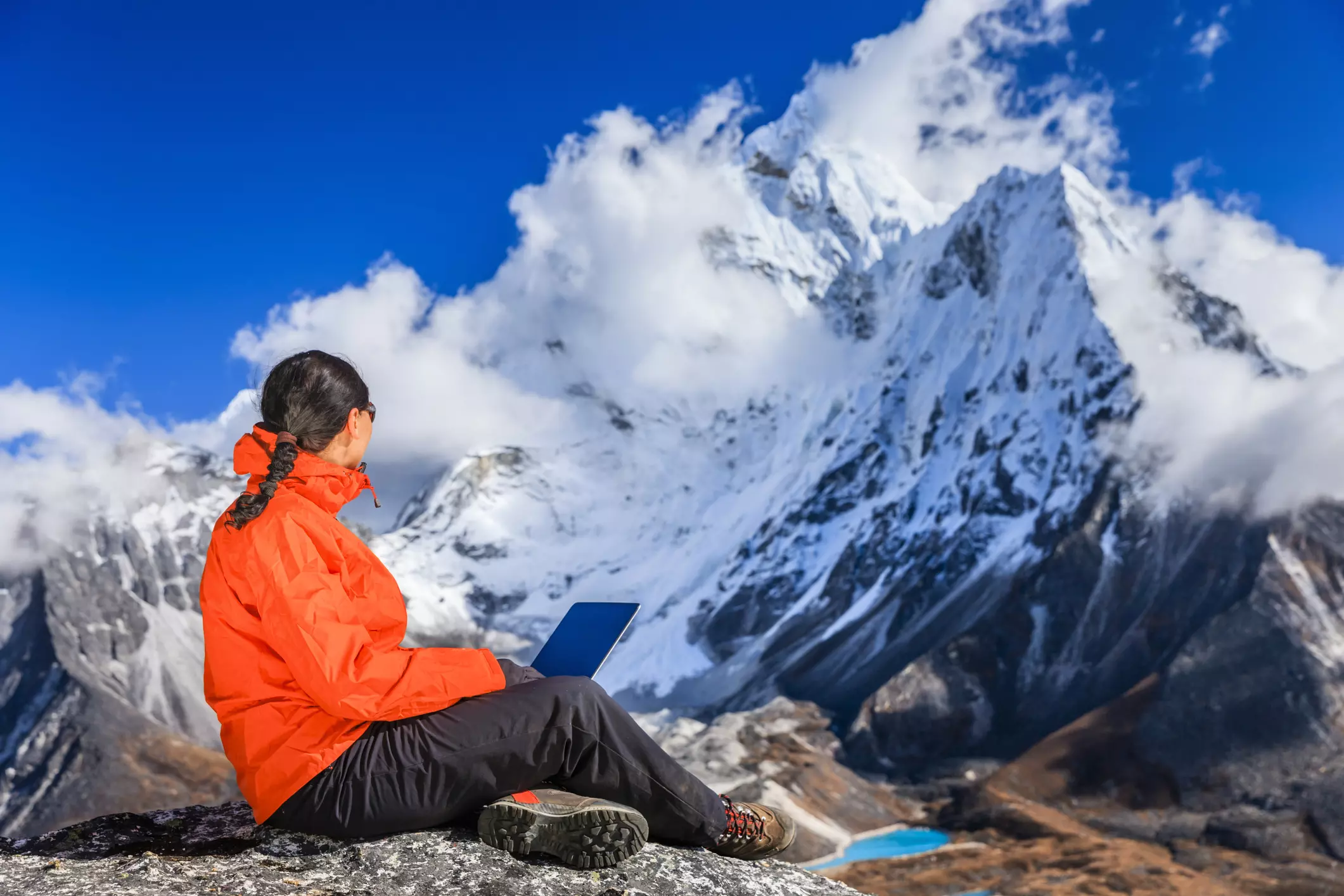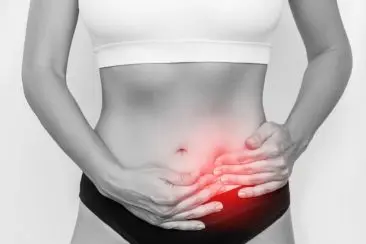Altitude Sickness Prevention: Teleconsult Advice for Mountain Tourists
Every year, thousands of people travel to the world’s tallest mountain ranges to enjoy adventure, peace, and incredible views. From the towering Himalayas to the trails of the Andes and the Alps, hiking at high altitudes has become increasingly popular. But going high up in the mountains can also be risky, especially when it comes to your health.
One of the biggest dangers is altitude sickness. This occurs when your body struggles to adapt to the lower oxygen levels at high altitudes, typically above 2,500 meters (approximately 8,200 feet). In severe cases, it can turn into life-threatening conditions like high-altitude pulmonary oedema (HAPE) or high-altitude cerebral oedema (HACE), which need emergency treatment right away.
Altitude sickness affects about 1 in 4 people who ascend to high altitudes quickly and up to 3 out of 4 people above 4,000 meters (approximately 13,000 feet), especially if they don't take the time to acclimate properly.
To stay healthy in the mountains, people usually climb slowly, drink lots of water, and sometimes take medicine. However, there's now a new way to get help—teleconsultation. That means you can talk to a doctor on your phone or computer.
In this blog, we’ll cover:
- How to prevent altitude sickness
- What symptoms to look for
- What to do if you feel sick at high altitudes
- How teleconsultation can help save lives
Whether you’re an experienced hiker or just starting, knowing how to stay healthy at high altitudes and when to ask for help can make your trip much safer and more fun.
Understanding the Problem
When people ascend to high altitudes too quickly, such as those found in high mountains, they can develop a range of health problems known as altitude sickness. This happens because there’s less oxygen in the air the higher you go, and your body needs time to get used to it.
There are three main types:
- AMS (Acute Mountain Sickness): the most common and usually mild
- HAPE (High-Altitude Pulmonary Oedema): serious, with fluid in the lungs
- HACE (High-Altitude Cerebral Oedema): very serious, with swelling in the brain
How Common Is It?
Around 1 in 5 people feel sick when they quickly go up to 2,500 meters (about 8,200 feet).
- At 3,000 meters, nearly 40% of people experience altitude sickness (AMS).
- HAPE is rare but can happen in up to 6% of people above 4,500 meters, especially if they go up too fast.
- HACE is very rare (occurring in less than 1% of cases), but it's also dangerous and can occur at altitudes above 4,000 meters.
Who Is Most at Risk?
Some people are more likely to get sick in the mountains:
- Climbing too fast: not giving your body enough time to adjust
- Sleeping too high up: staying overnight at high places can make symptoms worse
- Having it before: if you’ve had AMS, HAPE, or HACE before, it can come back
- Other risks: young men, people doing heavy exercise, those with heart or lung problems, or even just unlucky genetics
What Are the Signs?
Here's what to watch for:
|
Type |
When It Starts |
Common Symptoms |
|
AMS |
6–12 hours after climbing |
Headache, nausea, tiredness, dizziness, inadequate sleep |
|
HAPE |
2–4 days after climbing |
Trouble breathing, chest pain, cough (maybe frothy), fast heartbeat, blue lips/fingers |
|
HACE |
Days after AMS starts |
Confusion, acting strange, stumbling, very tired, possibly coma |
Warning: AMS can turn into HACE in a day or HAPE in half a day if not treated fast.
What Causes It?
At high altitudes:
- The air is thinner and has less oxygen.
- Your blood oxygen levels drop (usually around 88–91% at 3,000 meters).
- For AMS and HACE, your brain may swell slightly because of fluid leaks.
- For HAPE, your lungs fill with fluid due to high pressure in the blood vessels.
Why This Is Important for Travellers
- Anyone can get it, even healthy, athletic people.
- It can get worse quickly: early signs can seem mild, but things can go bad fast.
- Help might take a long time to arrive in the mountains, so it's important to act quickly if someone feels sick.
In short, learning about what causes altitude sickness and how to spot it can help you stay safe. This knowledge also allows doctors, either in person or through telehealth, to give you the right advice if something goes wrong during your mountain trip.
Core Prevention Strategies: How to Stay Safe at High Altitude
If you’re going up into the mountains, it’s essential to take care of your body to avoid getting sick from the high altitude. Here’s how to prepare and stay healthy:
Go Up Slowly & Let Your Body Adjust
Take Your Time Going Higher
When you climb above 3,000 meters (around 10,000 feet), don’t go up too fast. Try to sleep only 300 meters (about 1,000 feet) higher each night. For every 900 meters (approximately 3,000 feet) you ascend, take an extra day to rest.
"Climb High, Sleep Low"
You can hike up high during the day but go back down to sleep at a lower place. This helps your body acclimate to the thin air without becoming too tired.
More extended Trips = More Rest
For big hikes like Everest Base Camp, climbers often go up, then back down, again and again over many days (even 30+), to help their bodies adjust.
Drink Water & Eat Right
Drink Lots of Water
Air is dry up high. You lose water just by breathing! Try to drink 4–6 litres (about 8–12 water bottles) a day. Add things like electrolytes (found in sports drinks) to stay balanced.
Eat Carbs for Energy
Eat lots of carbs (like rice, bread, pasta). They give you energy and are easier to digest at high altitudes. Add protein and healthy fats as well, and snack on things like dried fruit and nuts.
Vitamins Help Too
Your body needs iron and vitamins, such as C, E, and A, to stay strong and adjust to the altitude.
Take It Easy & Rest
Don’t Overdo It at First
During your first two days at high places, don’t push yourself too hard. Go for light walks instead of long hikes. Moving around helps your body adjust more effectively than simply sleeping all day.
Rest Days Are Important
After going up 900 meters (about 3,000 feet), take a day off to let your body catch up.
Avoid Things That Make It Worse
Stay Away from Alcohol, Smoking, and Sleep Pills
These factors make it harder to breathe and can exacerbate altitude sickness.
Skip Unproven Tricks
Coca tea or hypoxic tents might not be effective unless used correctly. Stick to methods that doctors recommend.
Easy Summary: What to Do
|
What To Do |
Why It Helps |
|
Go up slowly, sleep lower |
Helps your body get used to less oxygen |
|
Drink 4–6 litres of water daily |
Keeps your brain and body working well |
|
Eat carbs, protein, and healthy fats |
Gives you energy and supports your blood |
|
Do light activity and take rest days |
Reduces stress and helps your body adjust |
|
Avoid alcohol, smoking, and sleep meds |
Keeps your breathing strong |
By going slowly, drinking enough, eating well, moving gently, and avoiding harmful things, you can have a safe and fun time in the mountains!
Medicine to Help Prevent Altitude Sickness
Besides climbing slowly and drinking lots of water, some people also take medicine to help their bodies adjust to high altitudes. These medicines don’t replace rest and thoughtful planning, but they can help in certain situations.
Acetazolamide (also called Diamox)
How it Works:
This medicine helps your body breathe better by making it act like it's already getting used to the altitude. It enables you to take in more oxygen.
When & How Much:
- Most people take 125 mg twice a day, starting a day before the climb, and keep taking it for a couple of days after reaching the highest point.
- For riskier trips, 250 mg twice daily may be used.
- Smaller doses are less effective.
Side Effects:
Tingling in fingers or toes, weird taste in your mouth, needing to pee more or ringing in your ears. Don't use it if you have severe kidney/liver problems or are allergic to certain medicines.
Dexamethasone
How it Works:
This is a steroid medicine. It can prevent altitude sickness and brain swelling (known as HACE). However, it doesn't help your body adjust as effectively as Diamox does.
When & How Much:
- For prevention: 4 mg every 12 hours, starting the day before the climb.
- For treatment, start with 8 mg, then reduce to 4 mg every 6 hours.
Be Careful:
This isn’t good for long trips. You should stop after about 10 days so your body doesn’t get too used to it.
Nifedipine & Similar Medicines
What it Helps With:
This medicine is for people who've had serious lung problems at high altitudes (like HAPE – High Altitude Pulmonary Oedema). It helps lower pressure in the lungs.
When & How Much:
30–60 mg twice a day, starting the day before you climb and keep taking it for 4–7 days.
Other Options:
If someone can’t take nifedipine, a doctor might give tadalafil (10 mg twice a day) instead.
Ibuprofen
What it Helps With:
This over-the-counter (OTC) painkiller can lower the chance of getting altitude sickness and help with headaches.
How Much:
600 mg, three times a day
This is a good backup if you can’t take the stronger medicines above.
Which Medicine Should You Take?
|
Medicine |
Best For |
Notes |
|
Acetazolamide (Diamox) |
Most people at high altitudes |
Helps your body adjust |
|
Dexamethasone |
If you can't take Diamox or climb fast |
Good for preventing or treating sickness |
|
Nifedipine |
People who’ve had HAPE |
Keeps lungs from filling with fluid |
|
PDE‑5 (like tadalafil) |
People who can’t use nifedipine |
Doctor-prescribed backup |
|
Ibuprofen |
Mild problems or headaches |
Easy to buy; not as strong |
Important Reminders
- Talk to a doctor first! These are not "just in case" pills; your doctor should tell you what’s safe for you.
- Start early: Begin your medicine about 1 day before the scheduled increase.
- You can combine medicines if your risk is high, but only with a doctor’s advice.
- Medicine is not magic! You still need to go up slowly, drink plenty of water, rest, and eat a balanced diet.
Watching for Altitude Sickness
When you’re in the mountains, it’s super important to pay attention to how your body feels. Catching signs of altitude sickness early can help prevent it from worsening.
Early Warning Signs
Sometimes, your body gives warning signs before altitude sickness becomes serious. Don't ignore them!
Mild symptoms (AMS - Acute Mountain Sickness):
Usually, it starts 6–12 hours after the temperature rises.
Look out for:
- Headache
- Nausea (feeling like you’ll throw up)
- Feeling tired
- Dizziness
- Trouble sleeping
Lung problems (HAPE - High Altitude Pulmonary Oedema):
Usually starts 2–4 days after going up.
Warning signs:
- Hard to breathe, even when resting
- A tight feeling in your chest
- Cough (may be pink or bubbly)
- Fast heartbeat
- Lips or fingers look blue
Brain problems (HACE - High Altitude Cerebral Oedema):
Very serious—get help right away!
Watch for:
- Confusion
- Trouble walking straight
- Horrible headache
- Acting super sleepy or slow
- Passing out or a coma
Using a Pulse Oximeter
A pulse oximeter is a tiny device you put on your finger. It measures the amount of oxygen in your blood (represented by SpO₂).
- When you go up high, your SpO₂ level decreases; this is normal.
- At 3,000 meters, it’s common to see numbers in the high 80s.
- If your SpO₂ is below 80%, you might be getting altitude sickness.
Tip: Check your oxygen level three times a day (morning, afternoon, and evening) and record your number and how you feel.
Good & Bad Things About Oximeters
Good Things:
- Shows how your body is handling the altitude
- Helps you catch sickness early
- You can share the numbers with doctors using telehealth (like video or phone calls)
Be Careful:
- It’s not always perfect, especially if your hands are cold or you move too much.
- If the number is low (under 80%), it’s harder for the device to be accurate.
- Don’t just look at the number; also pay attention to your symptoms.
Keeping Track of How You Feel
Use a checklist or journal to keep track of your progress. Some people use the “Lake Louise Score” for this.
Things to write down:
- Your symptoms (headache, sleep problems, tiredness, etc.)
- Your SpO₂ reading
- Any changes in mood or appetite
Example:
If you have a headache and SpO₂ is under 85%, that’s a warning sign—time to slow down and observe.
What to Do Based on Symptoms
|
Situation |
What to Do |
|
Mild symptoms + SpO₂ above 85% |
Rest, drink water, take ibuprofen if needed, don’t climb higher |
|
Moderate symptoms or SpO₂ 75–85% |
Rest, consider taking acetazolamide, talk to a doctor, maybe go down 300–500 meters |
|
Severe symptoms (HAPE or HACE) or SpO₂ below 75% |
Go down right away, give oxygen or dexamethasone, and get help fast |
Teleconsultation
If you're far from a hospital, you can still talk to a doctor by phone:
Here’s how:
- Keep a log of symptoms and SpO₂ numbers
- Send your info with a phone or an app
- The doctor can help decide:
- Is it safe to wait?
- Should you go down the mountain?
- Do you need medicine or rescue?
How to Treat Altitude Sickness
If someone starts to feel sick from the altitude, knowing what to do quickly can keep it from getting worse or even save a life. Here's how to treat different levels of sickness in the mountains:
Treating Mild Altitude Sickness (AMS)
If someone has a mild headache, feels tired, or is a little sick at high altitude (around 2,500–3,500 meters):
- Stop climbing; rest where you are.
- Drink 3-4 litres of water each day (add electrolytes).
- Take medicine for pain like ibuprofen (600 mg) or paracetamol every 6–8 hours.
- If a doctor prescribed acetazolamide (Diamox) for you before the trip, take it now (125 mg twice a day).
- Watch symptoms and your SpO₂ level (oxygen in your blood).
- If you feel better after a day, you can slowly climb again.
If you are unsure, please get in touch with a doctor by phone or message. Share your symptoms, SpO₂ reading, and how you feel; they'll help you decide whether to go up, stay, or go down.
Treating Moderate Altitude Sickness
If symptoms get worse or don’t improve in 1–2 days, or if your SpO₂ drops below 85%:
- Go down 300–500 meters or return to a lower spot.
- Keep drinking water and taking acetazolamide.
- Add dexamethasone (4 mg every 6 hours) if the person is confused or having trouble walking.
- Doctors may suggest oxygen, a special pressure bag, or more decent.
- If symptoms stay bad or SpO₂ doesn’t go up, you may need an emergency evacuation.
Treating Lung Problems (HAPE)
If someone is short of breath even while resting, coughing up pink frothy spit, or their lips are turning blue:
- This is serious; descend at least 1,000 meters immediately.
- Give oxygen until SpO₂ is above 90%.
- Give dexamethasone (4 mg every 6 hours) and nifedipine (30–60 mg every 12 hours).
- Use a portable pressure bag (like a Gamow bag) for 1 hour if you can’t descend quickly.
- Share SpO₂, symptoms, and breathing info. The doctor can help plan a rescue by helicopter or ground if needed.
Treating Brain Swelling (HACE)
If someone is confused, can’t walk straight, acts very sleepy, or passes out:
- This is an emergency!
- Go down 1,000 meters or more immediately.
- Give dexamethasone: Start with 8 mg, then 4 mg every 6 hours.
- Give oxygen to keep SpO₂ above 90%.
- Use a pressure bag if descent is delayed.
- Call for help right away; HACE can be deadly without fast treatment.
What to Do – Simple Chart
|
How Bad |
What You See |
What To Do |
Doctor Can Help With |
|
Mild AMS |
Headache, nausea, SpO₂ 85%+ |
Rest, drink water, take meds |
Check if it’s safe to keep climbing |
|
Moderate AMS |
Symptoms don’t get better, SpO₂ < 85% |
Go down 300–500 m, add dexamethasone |
See if oxygen or evacuation is needed |
|
HAPE |
Trouble breathing, cough, SpO₂ < 80% |
Go down 1,000 m+, give meds & oxygen |
Help plan a rescue |
|
HACE |
Confused, sleepy, can’t walk, coma |
Emergency descent, give meds & Oxygen |
Call for emergency rescue |
Getting Help From Doctors (Teleconsultation)
If you’re far from a hospital, you can still get help by calling or messaging an online doctor:
- Send your SpO₂ numbers, symptoms, and photos or video if needed.
- The doctor can assess the severity of the situation and advise you on the next steps.
- They may help arrange a rescue by helicopter or ground in the event of an emergency.
In short, if you feel sick at high altitudes:
- Watch your symptoms and SpO₂
- Know when to rest, treat, or go down
- Get help early using teleconsultation
Best Ways to Use Teleconsulting in the Mountains
Teleconsulting means getting help from a doctor through your phone or satellite device when you're far away, like in the mountains. Here's how to do it right: stay safe and be prepared.
Talk to a Doctor Before Your Trip
Before you even leave, have a video or phone call with a mountain doctor to:
- Check your health history (like if you’ve had altitude sickness before or have heart/lung problems)
- Ask about medicines like acetazolamide or dexamethasone
- Make a safety plan in case you get sick while hiking
The doctor can help you pack the right medicine and tools for your trip.
How to Tell a Doctor What’s Going On (Tele-triage)
If you start to feel sick, it helps to organise your info before talking to the doctor:
- Use a checklist to score symptoms like headaches, nausea, or tiredness
- Share your SpO₂, heart rate, or blood pressure if you have them
- Set clear danger signs, like SpO₂ under 85%, confusion, or trouble walking—these mean it's time to act fast
The more precise and detailed your information is, the better the doctor can help you, even from a distance.
Use the Right Tech
Bring helpful devices on your trip:
- Pulse oximeter: checks your oxygen level
- Satellite messenger or phone: lets you talk to a doctor when there’s no cell signal
- Apps: help you track how you feel and share that with doctors
- Wearable health monitors, such as smartwatches that track heart or breathing
If you don’t have internet, some apps store your info until they can upload it later.
Trained Local Helpers
Some mountain trips have trained guides or nurses who know how to help with teleconsulting:
- They can take your SpO₂, check your lungs, or do simple exams
- They talk to the remote doctor and help follow instructions
- Example: In the Alps, nurses in huts helped doctors respond in about 20–30 minutes!
All team members should be familiar with using medical tools and follow established emergency plans.
Legal & Insurance Stuff
A few important rules:
- Doctors may only be allowed to give medicine in certain places, depending on the country
- You must say it’s OK for them to use your health info (called giving "consent")
- Check if your travel insurance covers teleconsultations and emergency rescue
These steps ensure everything is legal, safe, and protected in case something goes wrong.
Planning for Safe Mountain Trips
To stay safe from altitude sickness, you need more than just gear; you need a brilliant plan. Here’s how to prepare your trip so everyone stays healthy and ready for help if something goes wrong.
Get Ready Before the Trip
Medical Supplies & Medicines
- Get your medicine early (like acetazolamide or dexamethasone).
- Pack a complete first-aid kit, pulse oximeter, oxygen, and a Gamow bag if allowed.
- Include clear instructions on when and how to use each medicine.
Health Check with a Doctor
- Have a teleconsultation (video or phone call) with a mountain doctor.
- They’ll check if you’re fit to go, look at past health problems, and help plan your meds.
Know What to Expect
Talk to your group about altitude sickness, how to spot signs early, and how teleconsulting works.
Everyone should feel okay asking for help if they don’t feel well.
Emergency Planning
- Map out a plan to get down quickly if someone gets sick.
- Know where the nearest doctor or hospital is.
- Make sure your travel insurance covers rescue or helicopter help.
Train Your Team
Know Everyone’s Job
- Train guides and helpers on the proper use of medical tools and how to follow checklists.
- Pick a medical leader to take readings and handle medicine.
- The guide communicates with the remote doctor and leads the rescue if necessary.
Practice Drills
Run practice sessions:
- Sharing SpO₂ data
- Giving oxygen
- Acting out emergency evacuations
This helps everyone stay calm in the event of an emergency.
Staying Connected
Have More Than One Way to Communicate
- Bring both a cell phone and a satellite phone or messenger (like Iridium Go).
- Test them before the trip to ensure they work correctly.
- Use the radio as a last backup.
Keep Things Charged
- Bring solar panels or big power banks.
- Always keep your phones, oximeters, and satellite devices fully charged.
Use Good Apps
- Pick apps that work even when offline.
- Ensure they keep your information safe and private.
Follow the Rules
Check the Laws in Each Country
- Ensure your telemedicine doctor is authorised to provide advice in the country you're visiting.
Get Consent & Protect Info
- Everyone must acknowledge that it’s okay to share their health information with remote doctors.
- That info should be protected and only shared safely.
Check Your Insurance
Make sure it covers:
- Teleconsults (video/phone doctor help)
- Medicines
- Rescue services like helicopters
- GPS tracking
Budgeting & Supplies
Plan Your Costs
Think ahead:
- Medicine
- Satellite communication
- Special tools like Gamow bags
Smart Spending
- Yes, it might seem expensive at first, but telemedicine can prevent minor problems from escalating into major emergencies, which ultimately saves money and lives in the long run.
Quick Summary Table
|
Category |
What to Do |
|
Medical |
Get meds, build a first-aid kit, and check with the doctor |
|
Teleconsult |
Set up with a doctor, get permissions, and protect data |
|
Logistics |
Map routes, plan for rescue, and check your insurance |
|
Training |
Teach your team, practice using tools, and run drills |
|
Infrastructure |
Test phones, bring chargers, have backup comms |
|
Budget & Insurance |
Plan your costs, check what insurance covers |
Good planning helps a lot. When your group knows what to do, has the right supplies, and can talk to a doctor if needed, you can stay safe and enjoy your mountain trip.
Frequently Asked Questions About Altitude Sickness and Teleconsultation
What is the best way to prevent altitude sickness?
The best prevention includes slow ascent, sleeping at lower altitudes, staying hydrated, eating a balanced diet, and resting often. Medications like acetazolamide may help when prescribed.
Can altitude sickness be treated with telemedicine?
Yes. Teleconsultation allows doctors to assess symptoms, review SpO₂ data, and advise whether to continue, descend, or begin treatment—even in remote areas.
What are the symptoms of HAPE and HACE?
HAPE causes breathing difficulty, chest pain, and coughing with frothy sputum. HACE leads to confusion, coordination problems, and may cause coma—both are medical emergencies.
When should I descend due to altitude sickness?
If your SpO₂ is below 80% or symptoms worsen (confusion, trouble walking, breathlessness), you should descend 500–1,000 meters and seek help immediately.
Can I use a pulse oximeter to monitor altitude sickness?
Yes. Pulse oximeters help track blood oxygen levels. Readings under 85% with symptoms indicate moderate concern; under 75% is a red flag.
Conclusion
Climbing tall mountains can be a fantastic adventure. The views are beautiful, and it's something you'll never forget. But being way up high can also make you feel sick if your body doesn't have time to get used to it. This is called altitude sickness. It may start with a slight headache, but it can worsen quickly if left untreated.
The good news is that altitude sickness can often be prevented. By climbing slowly, drinking plenty of water, eating a balanced diet, and getting sufficient rest, you can help your body adjust to the new altitude. There are also medicines and tools, such as pulse oximeters, that help you monitor your health. If you do get sick, knowing the signs early and seeking help quickly can help prevent the condition from worsening.
That’s where Mobi Doctor can help.
Mobi Doctor is an online doctor service that lets you talk to a real doctor from your phone, wherever you are, even if you're in the mountains. You can:
- Consult a doctor before your trip to determine if you're healthy enough to travel.
- Ask for advice and medicine to help prevent altitude sickness.
- Get help during your trip if you start to feel sick or need to know what to do next.
With Mobi Doctor, help is just a tap away, no matter where you are.






